#China Famous Blog Manufacturer
Explore tagged Tumblr posts
Text
I was just rewatching the Poirot episode "The Cat Among the Pigeons" for Harriet Walter (my beloved, as the kids say), and for the first time noticed this teacup:


Now is that or is that not the famous green china from the 1995 Pride and Prejudice? Don't bother answering that: it is, based on this blog identifying the manufacturer, this site showing closeups of the pattern, and the manufacturer's website which mentions that this pattern was also used in Interview with the Vampire.
I'm too lazy to make an account on @recycledmoviecostumes, but they don't seem to have this listed in the event that someone else wants to. Although I suppose it's impossible to know if it was the same set, since the company specializes in reproductions of antique tableware and the Cornelia Green design wasn't discontinued until 1995. I've always wondered where the design came from, since it looks anachronistic in P&P -- often that means it's a real antique that just doesn't fit the modern idea of the period, but I couldn't find anything in my brief googling.
#pride and prejudice#p&p 1995#poirot#cat among the pigeons#agatha christie#fine china#teacup#movie props#interview with the vampire#the timestamp is 0:50:30 in case you want to get a better screenshot
5 notes
·
View notes
Text
The Best Robotics Companies of Leaders in Automation and AI
Today the world is becoming crazy for technology. Every day, we hear about new inventions in the field of modern technology, such as AI, robotics, and many more. In this fast-changing world, many companies are involved in the robotics industry and raising the level of technology around us. One of the best robotic companiesin India, Club First Robotics, is ready to introduce robots to solve the real-life problems of our lives. Due to this, robotics is achieving different levels of significance in upcoming years. In this blog you will learn about the future of robotics and invention created by this company.
Innovating the Future
Its headquarters, located in Jaipur, India, isn't just building robots. They are crafting solutions that redefine possibilities. Established in 2009 and formally incorporated in 2020, the company has quickly risen to prominence with its dedication to technological advancement and customer-centric approach.
Famous Technology
Innovation is at the core of our success. They utilize advanced technologies such as SLAM, AI, and machine learning to create robots that are smart and can adapt to complicated surroundings. Each product demonstrates precision engineering and practical application, whether it's XENA™ 5.0's firefighting abilities or SONA 3.5 AI humanoid robot's service excellence.
Diverse Applications
The versatility of our' robots is striking. From defence and firefighting to healthcare and sanitation, their robots serve across various sectors globally. For instance, the KRUSHNA™ Tactical Combat Robot aids defence forces with tasks ranging from surveillance to logistical support, while the XENA™ 6.0 tackles manhole cleaning efficiently, enhancing worker safety.
Customer-Centric Approach
We focus on customer satisfaction, understand the unique needs of each sector they serve, and customise solutions accordingly. Whether it's providing robust firefighting capabilities or enhancing operational efficiency in hospitals, their robots are designed to exceed expectations.
Quality and Reliability
We are the best Robotics Company that prides itself on quality craftsmanship. Their manufacturing facilities boast cutting-edge equipment like CNC plasma cutting stations and 6-axis CNC machines, ensuring precision in every component. Each robot undergoes rigorous testing to meet international standards, guaranteeing reliability even in the most demanding environments.
Global Impact
With a strong presence in international markets, including KSA, Malaysia, China, and France, we have made significant strides in global robotics. Their partnerships with major corporations, government bodies, and humanitarian organisations highlight their role in advancing technology for societal benefit.
Future Goals
In the future, we will introduce new ideas and broaden our scope. By continuously conducting research on AI progress, integration of IoT, and sustainable robotics solutions, their goal is to take the lead in influencing the future of automation on a global scale.
Conclusion
We stand tall as one of the best robotics companies globally, driven by innovation, reliability, and a passion for technological excellence. Whether it's enhancing safety in firefighting, revolutionising defence operations, or improving healthcare services, their robots are at the forefront of transformative change. To learn more about their groundbreaking solutions and explore their diverse range of robots, visit Club First Robotic.
Visit Our Social Media Details :-
Facebook :- ClubFirstGroup/
Twitter :- ClubFirst7
G+:- JdM35zkETey2WUY59
Youtube :- @CLUBFIRST
Linkedin :- club-first/?originalSubdomain=in

0 notes
Text
A Comprehensive Guide to Aircraft Parts Manufacturers
The aviation industry is a marvel of modern engineering, requiring thousands of precise components to ensure safety, efficiency, and performance. This intricate network of parts is produced by various manufacturers, each specializing in different aspects of aircraft production. In this blog, we will explore the leading aircraft parts manufacturers, their roles, and some of the most reliable and renowned aircraft and engines in the industry.
Which Company Makes Airplane Parts?
Numerous companies worldwide specialize in manufacturing airplane parts. Some of the most notable aircraft parts manufacturers include:
Honeywell International: Known for avionics and control systems.
UTC Aerospace Systems (Collins Aerospace): Produces a wide range of systems including electrical power generation and distribution.
Safran Group: Specializes in aircraft engines and landing systems.
GE Aviation: Renowned for its high-performance aircraft engines.
Parker Hannifin: Supplies hydraulic, pneumatic, and electromechanical systems.
Meggitt: Provides high-performance components and sub-systems for aerospace applications.
These companies supply crucial parts that contribute to the overall functionality and safety of aircraft.
Who is the Biggest Aircraft Manufacturer?
The biggest aircraft manufacturers in the world are:
Boeing: An American multinational corporation that designs, manufactures, and sells airplanes, rotorcraft, rockets, satellites, and telecommunications equipment.
Airbus: A European multinational aerospace corporation that produces approximately half of the world's jet airliners.
Both Boeing and Airbus dominate the commercial aircraft manufacturing market, with extensive product lines that serve various airline needs.
Who Dominates the Aircraft Industry?
The aircraft industry is primarily dominated by Boeing and Airbus. These two giants have a duopoly in the large commercial aircraft sector, controlling the majority of the market share. Their extensive range of aircraft models caters to short, medium, and long-haul flights, ensuring they meet the diverse needs of global airlines.
Who Builds Planes Besides Boeing?
Apart from Boeing, several other companies build airplanes:
Airbus: As mentioned, a major player in the commercial aircraft sector.
Embraer: A Brazilian manufacturer that focuses on regional jets and executive jets.
Bombardier Aerospace: A Canadian manufacturer known for its business jets and regional airliners.
Mitsubishi Aircraft Corporation: Known for the Mitsubishi Regional Jet (MRJ).
COMAC (Commercial Aircraft Corporation of China): Developing the C919 and ARJ21 to compete in the commercial jet market.
These companies contribute significantly to the diversity and innovation within the aviation industry.
Who Makes the Best Airplane Engines?
Several manufacturers are renowned for their high-quality airplane engines:
GE Aviation: Known for producing powerful and efficient engines like the GE90 and GEnx.
Rolls-Royce: Famous for the Trent engine series, which powers many wide-body aircraft.
Pratt & Whitney: Recognized for their dependable and innovative engines, including the PW1000G geared turbofan.
CFM International: A joint venture between GE Aviation and Safran Aircraft Engines, known for the CFM56 and LEAP engines.
These manufacturers are at the forefront of engine technology, providing reliable and efficient powerplants for various aircraft.
What is the Most Reliable Aircraft Ever Made?
The Boeing 737 is often cited as one of the most reliable aircraft ever made. Since its introduction in the 1960s, it has become the best-selling jetliner in history, known for its efficiency, safety, and versatility. Its numerous variants have served airlines worldwide in various capacities, from short domestic flights to longer international routes.
What is the Most Reliable Airplane in the World?
When considering reliability in the context of modern aircraft, the Airbus A320 family is frequently mentioned. This series of narrow-body airliners is renowned for its advanced technology, fuel efficiency, and operational reliability. It has become a workhorse for airlines around the globe, consistently performing well in various operational conditions.
Conclusion
The aircraft industry is a complex ecosystem supported by numerous manufacturers specializing in different components. From leading companies like Honeywell and GE Aviation to major aircraft manufacturers like Boeing and Airbus, each plays a crucial role in advancing aviation technology and safety. Understanding the contributions of these manufacturers and recognizing the most reliable aircraft and engines helps appreciate the incredible engineering and collaboration that make modern air travel possible.
For more insights into aircraft parts and manufacturers, explore our Aviation Parts Manufacturers Catalogue, and check out our ASAP Axis website for detailed information on various components.
0 notes
Photo


8+ top facts about hospital 8+ top facts about hospital Hey guys! Today I’m going to show you about 8+ top facts about hospital. Watch more to learn about 8+ top facts about hospital don’t forget to like and subscribe this video! Established in 2002, HANGZHOU SAFEDOOR AUTOMATION & HARDWARE CO.,LTD is the first & leading manufacturer making the interior swing door operator in China. With the constant pursuit of high high quality and diligent work, a group of professional technical engineers and a strong R & D team, we have expanded the product range into the full line of door & gate automation products and other door hardware series. For example, automatic sliding door, automatic revolving door, automatic gate openers and operators, automatic door sensors, automatic boom gates etc. With the competitive pricing, co-operative staff and excellent management system, we have gained a well-recognized reputation worldwide. Our company is located in the beautiful lakeside city Hangzhou, which is about 168km from Shanghai, 2 hours away car travel from Ningbo. Hangzhou is famous for its thousand year culture, the beautiful scenery, and the best investing environment, which makes Hangzhou world-known for many years; On September 2016, the world G20 summit conference was held in Hangzhou. We cordially welcome both our old friends and new customers to contact us for further cooperation. BE MY FRIEND: Check my website: https://www.safedoormatic.com?tumblr=video2b Add me on Twitter: https://twitter.com/safedoorhz Add me on Facebook: https://www.facebook.com/1370057263130438 Add me on Youtube: https://www.youtube.com/channel/UCLGxL_DrhgPNGcLpHTqEV1w Add me on Vimeo: https://vimeo.com/user198622073 Add me on Tumblr: https://www.tumblr.com/blog/view/safedoorhz Add me on Reddit: https://www.reddit.com/user/NovelComb7536 8+ top facts about hospital please contact us immediately if you are interested in. View more: Best Quality New european style sliding gate opener Art.1042.103D Factory : https://youtu.be/D9Nz6gWzgfQ Best Quality New european style sliding gate opener Art.1042.103D Factory : https://www.facebook.com/582463396540059 Professional Sliding Gate Opener Faster speed . No. 1042.101 manufacturers : https://youtu.be/q6x8u-wVFTY Professional Sliding Gate Opener Faster speed . No. 1042.101 manufacturers : https://www.facebook.com/425886249154119 #8+ #top #facts #hospital #JAMES #ZUO #JAMESZUO #aluminumdoorforbathroom #karachihospitallatestnews #atthedoorvideo #ahaliahospital #hospital #aluminumbathroomdoorpricelist #aluminiumdoorfactory #autodoor #aluminiumwindowslidingdoor #hospitallabel #aluminiumdoors #autocoopdoor #ahaliadiabeteshospital
0 notes
Text
A Tiny Blog Took on Big Surveillance in China—and Won
At a location he keeps secret, John Honovich was on his laptop, methodically scouring every link on a website for a conference half a world away. Hikvision, the world’s largest security camera manufacturer, was hosting the event—the 2018 AI Cloud World Summit—in its hometown of Hangzhou, a city of about 10 million people not far from Shanghai. Honovich, the founder of a small trade publication that covered video surveillance technology, wanted to find out what the latest Hikvision gear could do.
He zeroed in on one section of the conference agenda titled “Eco-Friendly, Peaceful, Relaxed” and found a description of an AI-powered system installed around Mount Tai, a historically sacred mountain in Shandong. A video showed Hikvision cameras pointed at tourists climbing the thousands of stone steps leading to the famous peak. Piano music played as a narrator explained, in Mandarin with English subtitles, that the cameras were there “to identify all visitors to ensure the safety of all.” The video cut to a shot of a computer screen, and Honovich hit pause. He saw a zoomed-in view of one visitor’s face. Below it was data that the camera’s AI had inferred. Honovich downloaded the video and took screenshots of the computer screen, for safekeeping.
Later, with the help of a translator, he scrutinized every bit of text on that screen. One set of characters, the translator explained, suggested each visitor was automatically sorted into categories: age, sex, wearing glasses, smiling. When Honovich pointed at the fifth category and asked, “What’s this?” the translator replied, “minority.” Honovich pressed: “Are you sure?” The translator confirmed there was no other way to read it.
Honovich was shocked. In his many years in the industry, he’d never seen a surveillance company set out to automatically detect racial minorities. The feature seemed completely unethical to him, and he immediately wondered how China might use it against the Uyghur people, a mostly Muslim ethnic minority group, in the province of Xinjiang. Honovich had seen reports trickling out in the West of Uyghurs being subjected to constrictive surveillance and mass detentions. Clicking through the AI Summit website, Honovich couldn’t tell whether Chinese authorities were using this technology to oppress minorities, but he saw that danger coalescing. He quickly wrote up an article about Hikvision’s ethnicity-detection technology, including the video, screenshots, and a no-comment from the company, and posted it on the website of IPVM, the trade publication he had founded.
He talked about the discovery with one of IPVM’s reporters, Charles Rollet, a Frenchman who lives outside the US and also keeps his location secret. Rollet had written about how Hikvision and Dahua, the second-largest video surveillance manufacturer in China, were reaping huge profits from government work in Xinjiang. Rollet had a newspaper background and, though he was 25, talked like an ink-stained newsie twice his age, all “scoops” and “calling out abuses” and “hard-hitting news.” By trawling through publicly available materials online, Rollet had learned that Hikvision had landed a deal to build a mass face-recognition system to cover one Xinjiang county—including a “reeducation” center and some of its mosques—and a contract to install videoconferencing systems in mosques, presumably so attendees could watch sermons broadcast by the government. Dahua won the bigger contract: $686 million to build camera-equipped police stations in another part of Xinjiang. The deals specified that the companies would install these systems, run them for a number of years, and then pass them off to the government. In many aspects of the government’s video surveillance in Xinjiang, Rollet reported, the two companies were “deeply involved.”
Hikvision and Dahua cameras also happened to hang on houses, businesses, and public buildings in the US and much of the world. Security system installers eagerly sold huge numbers of the cheap cameras. Global financial institutions, such as Fidelity International and Norway’s sovereign wealth fund, were enthusiastic investors in the profitable, fast-growing Chinese companies. American chip giants Intel and Nvidia sold them silicon to power their face recognition.
That would all soon change. Over the next few years, IPVM’s writers unearthed one damning detail after another on Chinese surveillance gear. Their scoops would end up influencing national policy, changing those companies’ fortunes, and placing the reporters themselves squarely on the front lines of the US–China cold war.
0 notes
Text
Italian Marble Wall Cladding – Why Are They So Special?
What is special about Italian marble? Well, when it comes to interior décor, most people invest in Italian marble wall cladding. But have you ever thought why this marble is always in demand? Italian marble is considered one of the most precious marble in the world. Coming from stunning cities in Italy, these marbles can go well with any interior décor. Compared to other marbles, Italian variants are more beautiful. And we will discuss its popularity and quality in the following blog post.

Why are Italian marbles in so much demand?
Whether it is a traditional home or a modern one, the Italian marble design can boost its look to the next level. Like any other natural stones, Italian marbles are long-lasting and easy to maintain. And below are some reasons behind its huge popularity:
1. Heritage:
One of the vital reasons behind the popularity of Italian marble is its working heritage. Italians use various techniques to perfect quarrying since ancient times. When cutting and carving marbles, they set high standards for quality control. This makes Italian marble one of the best marble in the world.
2. History:
Italian marble comes with a rich history. World-famous renaissance artists including Donatello and Michelangelo used Italian marble. Well-known artwork like the statue of David is made of it. Besides that, they have also been used in many buildings across the world for centuries.
3. Quality:
Whether it is about purity, durability and beauty, Italian marbles are perfect. It defines luxury, sophistication and elegance for both residential and commercial reasons.
4.Appearance:
Italian marbles are prettier than any other marble variants. With a rich bright white surface, these marbles are perfect for every interior décor. No matter whether it is the office, house or resort, Italian marble cladding can bring a great sight to it.
How to choose the right Italian marble?
Choosing Italian marble is tough. Why? Well, many sellers try to sell any white-coloured marble as Italian marble. But most time they are low-quality marble manufactured in China and other countries. Thus, look for the following signs when buying Italian marble:
Italian marbles come with a crystal-like luxurious outlook and lustrous sheen. But other white marbles show a medium lustre.
The ideal thickness of original Italian marble range between 18 mm and 20 mm. Anything thicker than this is a fake one.
One side of Italian marble is always pre-polished. They undergo epoxy resin treatment and other matching pigments to increase their durability. And the pre-polished side hides these chemical resins from the surface.
Last but not least, ask the origin of the marbles when buying one. Original Italian marbles come from Italy. Hence, if the sellers name some other countries, it is fake.
Are you planning to revamp your interior décor? Instead of buying expensive items, you can install exclusive Italian marble wall cladding. With stunning beauty and amazing durability, they can bring a great outlook to your place. All you have to do is choose the right Italian marble from a good seller.
0 notes
Text
If you are looking to invest in traditional neon lights, then you should go through this blog first. We have an alternative that is flexible, bright, and especially meant for festive decoration. After a long and complete research of led neon lights Sir Illusion’s Neon lights were designed and manufactured from its very base in Zhongshan, China. We present to you one of the most in-demand, safe, low voltage and having a lineally long life “LED neon flex” lightings for all your festivities and celebrations. Christmas is almost here and we know how it feels when the lights that you have invested your pockets out are simply not working. Imagine the frustration of going through it amidst the Christmas.

Decorative neon light for Christmas is available for decorating your roof tops, gardens, porches, and front yards. We would like to highlight 5 main benefits of led neon Christmas lights though there are many more.
1. Light weight designs: Neon lights are thick and heavy. They also require extra space for their glass enclosure that holds the neon gas, thus making it bulky. On the other hand LED lights do not need tubes or enclosures to hold anything. They are much thinner in size and not all heavy. We have come up with a combination of both so that you get the best out of the both. You can enjoy decorative that are not only bold and bright but also light in weight so that you don’t worry about how to lift it up and install it on your roof top.
2. Brilliant Color & Powerful Brightness: Before LED was even born there were huge neon lightings that were used widely. Neon was very famous for its vibrant glow of variable colors. This could only be achieved through its built that consists of addition of other gasses into the tubes to bring out various colors. Our LED neon flex could even be seen in full daylight. But pure neon will blend with sunlight in daytime.
3. Longer life: Replacing a part or purchasing every time after investing so much is a time consuming process that will not only cost you a lot but will also tire you out. Our outdoor neon Christmas lights will have a longer lifespan compared to neon and fluorescent lights available in markets. They also don’t pose the risk of gas leakage that avoids a lot of trouble.
4. Energy Saving Lighting: Our led neon Christmas lights requires less energy to maintain a bright glow and a clear image. They also emit very little heat and are considered green for the environment.
5. Bigger than the usual Christmas lights: While the lights available in markets are smaller in size and have a much smaller life, Sir Illusion’s decorative neon light for Christmas are bigger and serves its actual purpose.
Visit our website https://sirillusion.com/ for more details or fill our contact form to hear from us.
#outdoor neon christmas lights#decorative neon light for christmas#indoor neon christmas lights#neon led christmas lights#neon light christmas decorations#neon light displays for christmas#led neon christmas lights
1 note
·
View note
Link
Free blogging platform , Top 10 Free Blogging Sites, List of best free blog sites, 10 Best Free Blogging Sites, China Famous Manufacturer, China Famous Blog Manufacturer, Top Selective Blogging Sites, 10 Best Free Blogging Sites in 2022, best free blogging platforms in 2022.
#best free blogging platforms in 2022#10 Best Free Blogging Sites in 2022#Top Selective Blogging Sites#China Famous Blog Manufacturer
1 note
·
View note
Text
Teardown of an "anti-5g" USB stick

The rise of conspiracism is a complex and contentious subject - I think the primary driver is a well-earned mistrust in institutions that have repeatedly failed to keep people safe in order to please concentrated industries that have captured their regulators.
But all the most vibrant conspiracies have a shared fitness factor: they offer a business-model to their most prolific boosters, in the form of crowdfunding, ads, merch, etc.
https://pluralistic.net/2020/05/15/out-here-everything-hurts/#q
It's not (necessarily) that these huxters are cynically manipulating believers for their own gain - rather, it may be that the power of a conspiracy to make you rich, famous and beloved is, on its own, a powerful convincer for the top grifters in the cult.
But I think it's a safe bet that the people behind the 5GBioShield - a £300 USB stick that purports to protect you from the (nonexistent) harms of 5G wireless signals - are just in it for the fucking money.
https://www.pentestpartners.com/security-blog/reverse-engineering-a-5g-bioshield/
The manufacturer claims it "provides protection for your home and family, thanks to the wearable holographic nano-layer catalyser, which can be worn or placed near to a smartphone or any other electrical, radiation or EMF emitting device".
<img src="https://craphound.com/images/_112517132_5gbiosphereweb-nc.png">
"Through a process of quantum oscillation, the 5GBioShield USB key balances and re-harmonises the disturbing frequencies arising from the electric fog induced by devices, such as laptops, cordless phones, wi-fi, tablets, et cetera."
A teardown from Pen Test Partners reveals that the key is seemingly identical to a £5, 128GB "crystal" USB stick you can buy from multiple suppliers in Shenzhen, China, with a sticker that "looks remarkably like one available in sheets from stationers for less than 1p."
The directors of Bioshield Distribution are Anna Grochowalska and Valerio Laghezza, who are linked to a previous venture called Immortalis, which sold a dietary supplement called "Klotho Formula."
https://www.bbc.com/news/technology-52810220
According to Immortalis's website, Klotho Formula's competitive edge is a "proprietary procedure that leads to relativistic time dilation and biological quantum entanglement at the DNA level."
Grochowalska declined to discuss how her £300 USB stick differed from the £5 units from China, claiming it was "sensitive information to third parties, for obvious reasons." She added that some of the markup is due to "the cost of IP rights."
The product was recommended by Toby Hall, a member of Glastonbury Town Council's 5G Advisory Committee, who told the BBC that he had no regrets about his purchase and has benefited from his use of the 5GBioShield.
Among the benefits Hall claimed: better sleep, more dreams, and "a 'calmer' feel to the home."
21 notes
·
View notes
Link
Chances are that by the time you get to the end of this article, there will be news of another information operation targeting Donald Trump. There’s one a day now—each trumpeting a new mortal threat to the republic or some dastardly revelation based on sources that are usually anonymous. Whatever it is, it will serve the same purpose as the hundreds of similar sallies launched over the last four years—namely, to preserve and protect the position and privileges of America’s ruling elite.
Trump stories are rarely about Trump. The same stories, or versions of them, would have targeted anyone who threatened to sever the American political, corporate, and cultural elite’s economic lifeline to the Chinese Communist Party. It is largely because Trump sought to decouple the United States from the CCP that America’s China Class, which owns the platforms on which Americans communicate, has waged a relentless campaign of information warfare against him through its social media and prestige media brands.
Consider the last two anti-Trump info ops: He gratuitously denigrated the historical suffering of African Americans, and he expressed contempt for America’s war dead. These are the sort of false allegations that political operatives are tasked to manufacture and disseminate during election season. Their purpose is to reinforce a negative impression of the opposing party among whatever cohort is being addressed, and make the target spend resources—time and money and sometimes blood—on defense. That’s politics 101, since the time of the Romans.
What’s new is that this is now journalism too. Since the internet defunded the press at the end of the 20th century and social media became the dominant player in America’s information space, journalism has abandoned the traditional standards and practices that once defined reporting. For instance, the smear holding that Trump is contemptuous of the military was supposedly based on four anonymous sources recalling exchanges from three years ago, which have been contradicted by dozens of named sources, some of whom were physically present when the comments were supposedly made—and some of whom have been public Trump opponents. In traditional journalistic terms, that’s not a news story—that’s a failed attack line.
The press that existed in America from the end of the 19th century until the turn of this one was designed to inform, influence, and sometimes inspire or inflame fellow citizens. But for people under 30, the only kind of “journalism” they’ve ever known is more like Pravda in the old Soviet Union or the kinds of party media found throughout the Third World. Journalism is an insider’s game, in which the stories are often outlandish, but rarely true; their actual news value is the hints they may offer about shadowy maneuverings that affect people’s lives but take place out of public view, like the rise or fall of a particular colonel who is pictured standing closer to or farther away from El Caudillo or Al Rais. Stories aren’t about the realities they purport to depict; the real stories are always the stories about the story.
American journalists, who now draw their paychecks directly and indirectly from the country’s largest economic interest—technopolies like Amazon, Apple, Google, and Facebook—are now turning the public sphere into a phantasmagoria of conspiracy theories and hysteria to cement the politburo’s position and privilege.
Accordingly, the debate in Washington, D.C., over which great power is feeding more disinformation into the 2020 election cycle isn’t real—it’s not Russia, as collusion impresario and Democratic Rep. Adam Schiff claims, nor, as Attorney General William Barr says, is it China, though he’s closer to the truth. The source of the purposeful disinformation pouring into the American public sphere like untreated sewage is the American elite, led by its tech oligarchs, who own the platforms on which information campaigns are staged and laundered to protect their core interests—foremost among them being cheap Chinese labor and access to Chinese markets.
Let’s return to the two smears from above: Trump scoffs at Black suffering and Trump says military service is for suckers and losers. The former comes from the Washington Post’s famous Watergate reporter Bob Woodward’s new anti-Trump book, and the latter was posted on the website of the Atlantic. Strip away the decorative paraphernalia that dresses them up to look like news articles, and both of these pieces of “journalism” are actually just tweets. The stories they’re attached to are hollow vessels festooned with brand names to ensure their reach and reception as they circulate through the information ecosystem of social media and cable news platforms.
Of course, when Jeff Bezos bought the Post and Woodward brands in 2013, he had no more idea than Vladimir Putin did that the host of “Celebrity Apprentice” would one day sit in the Oval Office. Bezos acquired them for the same reason the widow of Apple founder Steve Jobs picked up the Atlantic—to defend the industry, tech, and political arrangements with China’s manufacturing base that drive their profits from “political interference.”
A little historical background may help explain how America’s information supply has become so badly poisoned. The Atlantic magazine was founded in the mid-19th century in Boston, where it published some of the founding figures of the American nationalist movement in literature like Ralph Waldo Emerson and Oliver Wendell Holmes. In 2005, its owner moved the Atlantic to Washington, D.C., where it accomplished the rare feat of turning a profit in the contemporary publishing industry—not by selling magazines or ad space, which had been turned into cheap commodities by the rise of the internet, but by billing Beltway lobbyists and tech and defense executives for the opportunity to influence well-known thought leaders at conferences, luncheons, and parties hosted under the Atlantic label in Washington, Aspen, and elsewhere. Laurene Powell Jobs bought a majority share in 2017.
The big message her property sent with its anti-Trump blog post was that Trump is contemptuous of a significant part of his base. What many Trump supporters saw was something else, though: Another proof of the elite’s determination to replay the 2016 election cycle.
Four years ago, few normal Americans imagined that their political class was capable of manufacturing a conspiracy theory out of whole cloth and laundering it through the nation’s spy agencies and the press in the hope of overturning the result of a democratic election. But after four years of Russiagate, and subsequent operations (the Mueller investigation, Ukrainegate, the razing and looting of American cities disguised as “peaceful protests,” etc.), no one is unaware that such coordinated campaigns are possible. In fact, they have become normal.
This time around, the role played by spies in the 2016 election is being filled by former senior Pentagon officials, including James Mattis, Trump’s one-time defense secretary. In June, Mattis wrote an article—in the Atlantic—likening Trump to the Nazis for wanting to dispatch the military to protect the lives, homes, and businesses of American voters.
Gen. Mattis is no stranger to Silicon Valley or its scandals. As head of U.S. Central Command, the four-star Marine general pushed for the products of one Silicon Valley startup to be used on wounded Americans in uniform, and after retiring he won a lucrative seat on the board of the same company, Theranos, which turned out to be the biggest fraud in the history of biotech.
Then there’s Stanley McChrystal, a retired four-star Army general who is reportedly advising a Democratic PAC called “Defeat Disinfo” on how to use Pentagon software to wage information warfare operations against the Trump campaign. McChrystal resigned his post in 2010 after a magazine reporter documented how he and his aides savagely mocked then-Vice President Biden, the man his information warfare campaign is now supposed to install in the White House.
McChrystal’s beef with Trump is something more than just greed or ego. He has been openly critical of Trump for wanting to get American forces out of the Middle East. He ripped the president when Mattis left his Pentagon post because the Marine wanted to keep more troops in Syria. McChrystal was head of operations in Afghanistan and thinks Trump should stay there, too. The problem is, he’s not sure why. As he told Secretary of State Mike Pompeo, he thinks the best option is to stay in Afghanistan and “muddle along.” And now he’s getting paid by Silicon Valley, too.
Trump is right that top military brass has it out for him and probably for the reasons he states—because pointless engagements like Afghanistan advance them personally and land them lucrative seats on the boards of defense and technology companies. But the personal ambitions of Pentagon officials are finally no more relevant here than those of the FBI, DOJ, CIA, and State Department bureaucrats who played a role in the first installment of the Russiagate franchise. They’re walk-on parts, as are the various media operatives and outlets like Bob Woodward and the Atlantic, in a much larger corruption of our politics.
The central pillar of the corrupt new order is the American elite’s relationship with China. To be clear, the issue is not that former media organizations like the Post and the Atlantic are pro-China. Both publish articles about the Chinese military, intelligence services, propaganda campaigns, human rights abuses, etc.—at the same time as the Post runs a regular insert produced by the Chinese Communist Party called China Daily. The point is that terms like pro- or anti-Red China are from a different era, when publications like Henry Luce’s Time Magazine were partisan and had points of view.
What matters now are platforms. And for the purposes of information warfare, what’s important is not the content but rather the availability and reach of the platforms, whose job is to protect the American ruling elite’s wealth and preferences by spreading whatever propaganda the elite sees as beneficial. By threatening to split the United States from China, Trump earned the enmity of America’s China Class, which is working hard to remove him from office, and replace him with someone more pliant.
Trump was not the first presidential candidate who noticed there was a tremendous political opportunity in picking up the support of a middle class undone by the ruling class’s foreign trade practices. Democratic Congressman Richard Gephardt made the same case during the 1988 election cycle. Gephardt lost. He lost again in 1992.
By the time the Clinton White House granted China most favored nation trade status in 2000, all of Washington knew that America was running a vast trade deficit that was destined to increase with accession to the World Trade Organization. The price for lifting tens of millions of rural Chinese peasants out of poverty through favorable trade arrangements would be tens of millions of American lives ruined, even as large American companies like Apple and Nike and bankers like JPMorgan and Goldman Sachs got richer. The elite reasoned that they had no choice: The rise of China was inevitable. Why fight it?
American political and corporate elites didn’t choose decline. They chose to get rich. By shipping America’s manufacturing base off to China, they seized a business opportunity the likes of which had never been seen before—an enormous captive labor force controlled by an authoritarian regime that guaranteed the steady production of goods at a fraction of what it would cost at home. American cultural elites (Hollywood, sports, art, etc.) who exploited the increasingly large Chinese market for their products provided cover for the China Class cohort with messaging that dovetailed with CCP propaganda.
Who were Americans to judge a great and ancient civilization like China’s for jailing dissidents and enslaving the Uighur minority? Doesn’t America have its own history of slavery and political prisoners? It’s racist to protect American jobs. Those jobs aren’t coming back and there is nothing to be done about it, as Barack Obama famously said—unless you have a magic wand …
Calling out the American elite for betraying American interests in the service of their own personal and corporate bottom lines helped Donald Trump win the presidency. But it’s not clear that he truly understood how deeply entwined Beijing’s interests were with America’s China Class—and that trying to decouple the two would lead to an attempt at a permanent coup by the new techno-elite, targeting not just him and his supporters but the foundations of the republic, from our military to the media, and from our justice system to the institution of the presidency itself.
The American elite’s financial relationship with China is the key to understanding what’s been happening in America the past four years. Any president, Democrat or Republican, who took on China would have been targeted by the China Class. Because it was Trump flying the Republican banner who sided with America’s working men and women, the Democrats resorted to alliances with powers that now threaten the stability and security of the country.
#china#trump#media#journalism#conspiracy stuff#conspiracy#bourgeoisie#class warfare#class war#information warfare#psychological warfare
2 notes
·
View notes
Text
MAKRANA MARBLE IN INDIA BY BHANDARI MARBLE GROUP INDIA RAJASTHAN KISHANGARH
BLOG – 18
Makrana White Marble
Makrana White Marble is the best quality of marble. Basically Makrana Marble is durable and becomes shinier with time and usage. It originates and produced in Rajasthan, India. Taj Mahal, Birla Temples, and many other historical monuments are made of Makrana. Taj Mahal is made up of high quality of white Makrana Marble, which is mined in the town of Makrana of Rajasthan.
Usually, this high-quality marble is used in making sculptures and building decor. Makrana marble is a type of white marble, popular for use in sculpture and building decor. It is mined in the town of Makrana in Rajasthan, India, and was used in the construction of several iconic monuments such as the Taj Mahal in Agra and the Victoria Memorial in Kolkata. The Makrana Marble is listed as a Global Heritage Stone Resource by the International Union of Geological Sciences.
MARBLE IN MAKRANA BY BHANDARI MARBLE GROUP
Makrana Marble quarry is the oldest one in India. After mining, these Marble stones are only used in cutting and chiseling. *Makrana White Marble *Dungari Marble *Makrana Kumari Marble *Albeta Marble
Makrana Dungari Marble in Makrana, Granite, Marble, Sandstone & Others Indian Marble Makrana Dungari Marble Makrana. White Cut-to-Size Makrana Dungari Marble, Thickness: 20-25 mm, Flooring.
Which marble is best for flooring?
White marble slabs are one of the best options for flooring material due to its beautiful and pure look. White marble is the most likely choice for homes as the white color adds elegance and creates serenity in the atmosphere.
Which marble is used in the Taj Mahal?
Makrana White Marble is the best quality of marble. Basically Makrana Marble is durable and becomes shinier with time and usage. It originates and produced in Rajasthan, India. Taj Mahal, Birla Temples, and many other historical monuments are made of Makrana.
Is marble good for flooring?
Makrana Marble flooring is the best choice for indoor areas like foyers, halls, and bedrooms. Polished marble surfaces also tend to be slippery when used in bathrooms. Since marble absorbs water and stains easily, marble is not a practical choice for the kitchen.
Is marble flooring good for health?
Marble tile also has a health benefit – the marble is a natural stone and can actually keep away microscopic particles and germs if it is cleaned properly. Cons of marble tile: Marble, like many other stone tiles.
What city is famous marble? Kishangarh is also known as the marble city of India because of the presence of marble in Kishangarh, which makes it a world-famous and unique tourist center. It is one of the most sought after places and has become synonymous with Kishangarh city over the years.
Is Indian marble good quality? With immaculate quality and premium look, India caters to the high demand for marble in the world market. India is also involved in the processing and production of marble as per global standards. This stone is a cost-effective choice and easily available in the following options: Makrana marble and Rajnagar marble.
Which country has the best marble?
Why Italian Marble Is the Finest Marble in The World. While marble is quarried in many countries around the world including Greece, USA, India, Spain, Romania, China, Sweden, and even Germany, there is one country which is generally considered the home of the most high-grade and luxurious marble available.
Where is Marble most commonly found?
Marble is found in various places around the world, including India, Greece, Spain, Turkey, Italy, and the United States of America. Marble companies go to these places to find marble as enormous rocks in their natural state. Then, the marble is cut into slabs or smaller pieces to be used in construction or in art.
Which is better granite or Makrana marble?
Hardness and Durability: Granite is harder than marble, so it is more resistant to chips and scratches. Both marble and granite countertops are quite durable, but if they are properly sealed every one or two years. Granite and marble are porous, so without a seal, liquids will penetrate and stain.
Observing pattern and color classify Makrana Marble into the following types.
Makrana White Marble: This is the most common type of calcite stone of white color used for building construction and sculpture.
Dungari Marble: It has a slightly Grey pattern on white. it is commonly used for flooring purposes without any chemical treatment.
Kumari Marble: It is the most economic type of Makrana marble. It comes in white color with grey or brown line patters
Albeta Marble: it has a white color with dark or black lines.
Brown Albeta Marble: Brown color pattern makes it perfect for the use of building construction.
Makrana Pink Marble: Because of the stunning pink color it is used for decorative purposes in houses.
Types of Makrana Marble
Makrana Marbles splits into various categories according to its design and pattern. The following are the exclusive marbles that are mined and manufactured at Makrana.
Makrana White Marble- Makrana marble is highly used in residential & commercial buildings and numerous temples, mosques, churches, and monuments; it can be used for decorative purposes in houses, hotels, corporate offices, and Restaurants, western and Indian sculptures, handicrafts.
Brown Albeta Marble- This marble stone is a calcite stone. It is a milky white marble and also available in grey and panther brown pattern. The stone is available in various forms such as natural blocks, large & small slabs, and regular tiles.
Dungari Marble- Dungari Marble is one of the oldest and finest quality marble of Makrana based mines. This stone is widely used in flooring, and wall cladding due to its special qualities like no chemical reinforcement, no color changes, and no pinholes.
Albeta Marble- Albeta Marble is one of the best as well as highly recommended stone for floor designs which gives luxury look to the home. The color of albeta Makrana marble is milky white with a brown texture.
MAKRANA MARBLE BY BHANDARI MARBLE GROUP
Name – Makrana Marble
Origin – India
Color – White
Approx Price: Start From 350rs to 750rs per sq.ft
Minimum Order Quantity: 1000 sq.ft
GST 18%, Loading, Packing, and Delivery Charges Extra
Product Details:
The oldest and the best quality marble in the world. It needs no chemical reinforcement like Italian marble, any pinholes, any color change, and loss of polish. This is practically verified by the buildings and numerous temples, mosques, churches, and monuments in India for over years now. Thus the life of the next seven generations is guaranteed. Makrana marble is basically a god quality of marble. It is also is known as milky white marble. This marble has white color, gray and panther brown looks actually Makrana is the name of the village which marble produce from here. There are 200 Gangsaw established mfg. marble slabs & tiles. The Investment in marble units is of Rs. 6000 Core approx. More than 3500 marble seller units are here. This sector employed Fifty thousand direct & indirect persons.
BHANDARI MARBLE GROUP
Makrana is a town in the Nagaur district of the Indian state of Rajasthan. Makrana is famous for the white stone as marble mined from the mines around it. It is said that the Taj Mahal was built from Makrana marble. Makrana is a small town, but it has plenty of marble outcrops. Most of the residents in this town work as marble miners.
TYPES OF MAKRANA MARBLE
Makrana Dungari Marble
Makrana Albeta Marble
Makrana White Marble
Makrana Kumari Marble
Makrana Pink Marble
Makrana pure white marble
Brown-Albeta Makrana marble
Dungari Marble
Bhandari Marble Group
Known for its white marble reserves, Makrana is a small town in Nagaur district, with a deposit of 75 million tones and 50,000 laborers working in 500 mines in the several ranges of the Aravali. Makrana, along with Rajsamand, is the main center of marble in Rajasthan. Calcite in nature, Makrana Marble is regarded as the oldest in age and finest in quality.
Makrana is a source of employment for at least 1 Lac people of about 100 surrounding villages. The famous Victoria Memorial of Kolkata, the world-famous Taj Mahal in Agra, Raudat Tahera in Mumbai, and Jain Temple of Dilwara in south Rajasthan are built from Makrana Marble.
Bhandari Marble Group – Specialized
We are specialized in Products like Makrana white marble, Makrana dungari marble, Makrana albeta marble, albeta marble, Makrana white marble, Makrana pure white marble, Makrana Kumari marble. Delivered at the best price rates and Customer satisfaction is our best motive and we strive to meet up to our expectations.
Bhandari Marble Group – Market
The targeted market in India is Uttar Pradesh, Maharashtra, Bihar, West Bengal, Andhra Pradesh, Tamilnadu, Madhya, Pradesh, Rajasthan, Karnataka, Gujarat, Orissa, Kerala, Jharkhand, Assam, Punjab, Haryana, Chhattisgarh, Delhi, Jammu and Kashmir, Uttrakhand, Himachal Pradesh, Tripura, Jaipur, Rajsamand, Katni, Makrana, Udaipur, Meghalaya, Manipur, Nagaland, Goa, Arunachal Pradesh, Pondicherry, Chandigarh, Mizoram, Sikkim, and Andaman.
Mumbai, Delhi, Bangalore, Kolkata, Chennai, Hyderabad, Ahmadabad, Pune, Surat, Kanpur, Jaipur, Lucknow, Nagpur, Patna, Indore, Thane, Bhopal, Ludhiana, Agra, Pimpri, Chinchwad, Nasik, Vadodara, Faridabad, Ghaziabad, Rajkot, Meerut, Kalyan-Dombivali, NaviMumbai, Amritsar, Varanasi, Aurangabad, Solapur, Allahabad, Jabalpur, Srinagar, Ranchi, Visakhapatnam, Chandigarh, Mysore, rah, Jodhpur, Guwahati, Coimbatore, Vijayawada, Mira-Bhayandar, Gwalior, Hubballi-Dharwad, Bhubaneswar, Jalandhar, Salem, Madurai, Aligarh, Bhiwandi, Kota, Bareilly.
Thiruvananthapuram, Moradabad, Tiruchirappalli, Raipur, Gorakhpur, Bhilai, Jamshedpur, Amravati, Cuttack, Rajpur, Sonarpur, Bikaner, Kochi, Cochin, Bhavnagar, Warangal, Siliguri, Ulhasnagar, Kolhapur, Dehradun, Jammu, Nanded, Ajmer, Durgapur, Gulbarga, Guntur, Jamnagar, Bhatpara, Saharanpur, South Dumdum, Jalgaon, Noida, Maheshtala, Korba, Asansol, Ujjain, Gaya, Malegaon, Tirunelveli, Udaipur, Belgaum, Akola, Davanagere, Tirupur, Ahmadnagar, Jhansi, Bokaro, Kozhikode Calicut, Mangalore, Kollam, Quilon, Nellore, Gopalpur, Latur, Lalbahadur, Nagar, Panihati, Brahmaputra, Ambattur, Dhule, Quthbullapur, Tumakuru, Tumkur, Muzaffarnagar, Bhilwara, Bhagalpur, Shivamogga, Shimoga, Mathura, Muzaffarpur, Patiala, Bellary, Rohtak, Singrauli, Kamarhati, Hisar, Chandrapur.
Shahjahanpur, Bally, Firozabad, Nala, Sopara, Panipat, Thrissur, Nizamabad, Parbhani, Bilaspur, Kulti, Etawah, Bardhaman, Alwar, Darbhanga, Rampur, Naihati, Kakinada, Aizawl, Dewas, MauSatna, Jalna, Sonipat, Kurnool, Ichalkaranji, Rajahmundry, Durg, Hapur, Deoli, Ozhukarai, Tirupati, Gandhinagar, Bathinda, Avadi, Baranagar, NangloiJat, Karimnagar, Srirampur, Bijapur, Sagar, Bharatpur, Anantapur, SriGanganagar, Kapra, Bihar, Sharif, Ratlam, Farrukhabad, Raichur, North Dumdum, Ramagundam, Tiruvottiyur, Hosapete, Bidar, Arrah, Panvel, Ambernath, Loni, Kochi Cochin, Uluberia, Dhanbad, Bidhan Nagar, Rewa, New Delhi, Pali, Navghar, Purnia, Imphal and Mirzapur.
DOORSTEP DELIVERY
If you are looking to install natural stone in your new home, Contact us at BHANDARI MARBLE GROUP and we would make your task easy and hassle-free. We also offer doorstep delivery where it is ensured that the best quality products reach you.
DESIGNERS AND ARCHITECTS ARE WELCOME
We personally invite designers and architects to find the exclusive quality of stone for all types of projects.
BHANDARI MARBLE GROUP has been a reliable partner for all your MARBLE GRANITE AND NATURAL STONE requirements since the year 1631. Decades of experience in the marble industry have made us what we are and we remain grateful to you for contributing to our success. BHANDARI MARBLE GROUP has exclusive relationships with some of the world’s most renowned Architects, Interior designers, Builders, Developers from all around the globe.
BHANDARI MARBLE GROUP
Since 1631
+91-9672941111/ 9829040013
Enquire now & get 7% off on all products!
Add by Makrana marble stone Experts and Export team of BHANDARI MARBLE GROUP INDIA RAJASTHAN KISHANGARH
1 note
·
View note
Text
Vietnamese Hair: All Things You Should Know!
Vietnamese Hair: All Things You Should Know!
Have you ever heard about Vietnamese hair extensions? You always buy hair from India or China and this is your first time buying hair from Vietnam? You don’t know about differences among Vietnamese , India, and China Hair, then this blog will answer all your wonders! All things about Vietnamese hair are revealed here!
I. What Is Origin Of Vietnamese Hair?
Vietnamese hair is 100% natural human hair collected from Vietnamese women
Mostly, the hair is taken from the villagers in the high mountains( with cold weather), so their hair is really strong and silky( their hair isn’t affected by sunlight)
80% of hair is from women at the age of 18-25
As you know, the villagers from the high mountains are very strong in health, they work all day. Therefore, the quality of hair is along with the donor’s health, it is very strong and durable.
II. What Is Characteristics Of Vietnamese Hair?
Vietnamese hair is loved by many wholesale hair sellers in the world because of many prominent characteristics of hair quality.
2.1 Vietnamese Hair has a thick texture and natural black color
The Natural Colour is naturally black, sometimes it is dark brown. This natural tone colour is loved by many customers because it brings out a natural and confident outlook
The texture of hair is very full and thick, so it is very easy to make many hairstyles like curly, wavy from the natural straight texture.
2.2 Vietnamese Hair is soft and silky
As mentioned above about the origin of Vietnam Hair, the hair is taken from 100% women hair, healthy donor for the best quality hair.
The hair goes through no processing method so it keeps the natural texture: soft and natural silky. Under the sunlight, you can see the silky light shinning from the hair.
You even can’t need a comb to brush hair, just use your hand and glide past your hair smoothly
2.3 Vietnamese Hair has long durability
The durability of natural straight hair can up to 2-10 years depends on the way you maintain the hair.
With processed hair like curly wavy colour hair, it can be from 1-5 years
2.4 No Chemical Processed Hair
>> In K-Hair factory, we all understand about these prominent characteristics of Vietnamese hair compaired with China or India hair. Therefore, we want to keep the best natural texture of vietnam hair and make them into beautiful products hair weft to my dear customers.
>> We don’t use any chemical to put into hair, we use natural ingrediants and traditonal method to maintain and style the hair: For example, to make light brown colour in hair, K-hair factory use coffee beans to make brown colour. By this way, the hair has a light silky brown colour and a fragrant smell
See More K-Hair Colour Collections . Click Here!
III. How many grades of Vietnamese Hair? Is Vietnam hair is divided into A8, A9, A10 like China Hair?
Vietnam hair factories don’t separate hair into A grade: A8, A9, A10,.. like China hair. Normally, Vietnam hair vendors divide hair into 3 grades: single drawn hair, double drawn hair and super double drawn hair
But in K-Hair Factory, we upgade to 4 grades of hair to meet customers’s requirement. These are single drawn hair, double drawn hair, super double drawn hair and Vip hair( the best hair quality)
Single Drawn Hair: 40-45% hair is same length, the rest is mixed length
Double Drawn Hair: 60-65% hair is same length, the rest is mixed length
Super Double Drawn Hair:80-85% hair is same length, the rest is mixed length
Vip Quality: 90-95% hair is same length, the rest is mixed length
IV. Compare Vietnamese Hair vs India and China Hair
2.1 Vietnam hair
Vietnam hair is very famous for good quality of hair at a reasonable price. Moreover, the healthy sources of hair donors make the hair become durable in a long time of using ( it can be up to 2-10 years if customers know how to take care properly. The price is estimated to be reasonable, just from 8.9 USD/bundle.
2.2 China hair
China hair factory is widely known for industrial-scale production and cheap products due to the availability of cheap labour and advancement in the increased use of technology. Therefore, the price of hair in China market can be considered to be quite cheap. But according to many wholesale hair sellers, China hair is quite nice for the first time but then becoming tangled and shedding easily.
2.3 India hair
Because of India’s economy, the labour and prices of products in India are very very cheap, also with hair products. But the price is always together with quality. The price of hair in India is much cheaper compared with the Vietnamese hair factory and China hair factory. Just 6.7 USD you can get a bundle and we can’t for so good quality hair at a low rate price.
V. Where To Buy VietNam Hair From A Reliable Vietnamese Hair Factory?
Check this link to find out top 5 best Reliable Vietnamese Wholesale Hair Distributors !!
https://k-hair.com/vietnamese-hair-factory-top-best-wholesale-hair-distributors/
CLICK HERE TO CHECK NOW!
The best address to buy Vietnamese hair high quality: K-Hair factory
Vietnamese fullest hair is considered the best choice for any girl. The young women like to apply the substance hair extension such as fullest tip-in hair, while others like convenient types (full weft hair or clip-in hair). K-Hair factory is one of the best factories can supply this great hair type.
With 30 years of experience in the hair industry and the understanding of each hair type, K-Hair factory is one of the leading suppliers in Vietnam. K-Hair products always have competitive advantage superior to other manufacturers because of the quality, price and customer service. We ensure that we can supply the highest quality Vietnam hair extensions
Contact :
Website: www.k-hair.com
Instagram : the_k_hair
Fanpage: K-Hairvn
Whatsapp : +84 85 558 8000 ( Cherry CEO )
1 note
·
View note
Text
Seeing the Light . . . Portrait Research and practice. Not complete!

Today kicked off a brand new project brief called ��Seeing the Light’. This brief is designed around capturing 4 portraits, family, friends or strangers, in natural light. In this brief we can use either or a combination of a diffuser, scrim, flags or reflectors in certain situations according to how intense the natural ambient light is.
What are the Qualities of Light?
Natural light is any light generated by the sun. The light of day can be harsh or diffused, depending on the weather, cloud-cover, heat and cold, direction, or even time of year.
Without the benefit of light, there can be no image. The frame would be void, black and lifeless. So one could say that each image has a symbiotic relationship light. There is a push and pull between the areas of shadow and the lighter areas of an image, irregardless of whether the light falling on our subject is natural or lit with studio lighting.
Characteristics of Light
The Golden Hour
***************************************************************************************
Portrait Lenses
(note: I have not included the 35mm here because headshots taken with the 35mm exhibit distortion. That being said, with distance, the lens can be good, however, it is just not a portrait lens and will never truly be as good as the ones listed below.)
I think that lenses should be chosen by, not only where the image is going to be taken, say, i.e. a very small studio, or on walk-about around Glasgow, but also available light
The three prime portrait lenses that really shine for me are -
50mm - The 50mm prime lense has a wide aperture and is a great standard portrait lens. It has a fantastic shallow depth of field, and though it has less distortion that a 35mm, there is still some barrel distortion with headshots, so I would stick to half-body or full-body captures.
What is barrel distortion? See below.
Barrel distortion is an aberration and “happens because the field of view of the lens is much wider than the size of the image sensor and hence it needs to be “squeezed” to fit”. (Mansurov, 2019)
“Some barrel distortion is present in most wide angle lenses and zoom lenses with relatively short focal lengths.” (Mansurov, 2019)
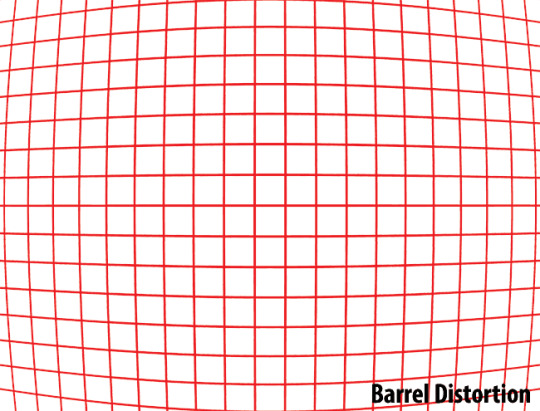
(Mansurov, 2019)
Since we have spoken about barel distortion, we have to include pin cushion distortion. Pin cushion distortion in zoom lenses, in particular, consumer grade or even some pro lenses. More expensive lenses contain compensating elements that reduce pincushion distortion to acceptable levels.

(Mansurov, 2019)
The above are examples of optical distortion.
Below is what happens when you capture up-close images with a wide angle lens. This however, has to do with perspective distortion and not lens distortion. Lenses have no perspective. I will be researching this further in a later blog.

(Mansurov, 2019)
See below - focal length does not impact perspective distortion when you are far enough away from your subject.

(Lightroom, 2019)
However - perspective distortion is caused by the distance between the lens and the subjects face, NOT focal length.

(Lightroom, 2019)
85mm - Most photographers would agree that the 85mm is the best lens for portrait photography. It has a wide aperture, shallow depth of field and less of the distortion that we get with the 35mm and 50mm lenses, however there is still some barrel distortion. It is still a go-to lens though because close-up to our sitter we capture a flattering perspective of our subject’s face. Also, 85mm at 1.4mm - 1.8mm will make the background melt into a creamy background, even with waist-high shots, and full length shots. At full length there is still a wonderful 3D feel to the shots with a decent amount of background if you so choose.
135mm - The 135mm prime lens has a wide aperture and longer focal length which gives gorgeous bokeh. I have a manual 135mm lense and the bokeh is swirly and beautiful and it produces sharp images, however, it is manual focus, so would be better in the studio imo. I do note however that, the 85mm is a better choice for closeness to the subject you are shooting. A conversation can continue and a rapport can be built to put her or him at ease. (Abbott, 2019)
Nikkor DX 18-105mm lens - This has been my go to lens when I am out shooting street photography or street portraits. It spans the ranges I need for portrait photography. For example, see the 4 images below . . .

TinaBritton Photography 2014

TinaBritton Photography 2014

TinaBritton Photography 2017

TinaBritton Photography 2017
105mm (full frame sensors) - This is my next prime lens. Yes, the 18-105mm I already own expands to 105mm, however, I want the constant large aperture the Sigma lens offers.
What about zoom lenses?
What if you only have a 70-200mm (as with the 18-105mm above) in your bag and cannot afford prime lenses right now? The 70-200mm can work for you in many portrait situations. Now, I like to be close to my models. It’s more personal and while I am shooting, I can have a conversation with he or she. This puts the model at ease. With this lens we can still shoot in that range, however, that being said, capturing a portrait, though I have to stand further away, at say, 200mm at 2.8mm creates a beautiful background and unique perspective. Watch out for distortion. (Hull and >, 2019)
*****************************************************************************************************
How do we control the light?
What is a Scrim?
Scrims is a woven fabric on a frame that reduces the light by about 1/2 stop. “The Full scrims will dim the light intensity across the entire beam spread, while 1/2 and graduated scrims are used to even out the beam spread when lighting a subject or background from an angle.”

(Anon, 2019)
What is a Flag?
A flag (black refector) is used to block or control (shape) the light in your scene. It can be used to fill in shadow (negative fill) and to increase contrast. It can stop flares from reaching your camera, almost in the same way a lens hood does.
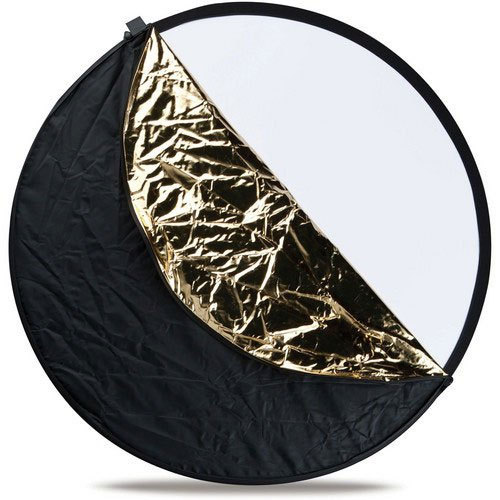
(Digital-photo-secrets.com, 2019)
What is a diffuser?
A diffuser (or silk) goes between your light source and your subject and produces a finer light, like a softbox. It reduces glare and is flattering to your subject.
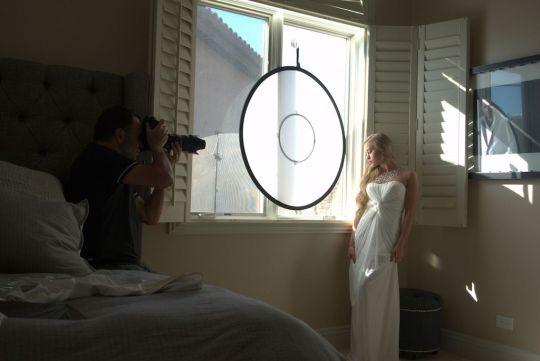
(Ghionis, 2019)
What is a reflector?
A reflector helps light reach your subject and also helps to soften the light meeting your subject. It comes in silver and gold and white. Many come in a kit as the one seen below. Be careful using the silver as it can be harsh if bouncing bright sun. Gold gives your subject a golden hour look, however, in some situations, can give your sitter a strange glow. White gives your subject a soft glow.

(Digital-photo-secrets.com, 2019)
Choose 5 Photographers -
1. Henri Cartier-Bresson -
Henri Cartier-Bresson was born to a successful textile manufacturer and his mother (1908-2004) in France. The master of capturing a candid moment, Bresson was the father of street photography and photojournalism. It was his belief that photography was about capturing the spontaneous or the ‘decisive moment’.
Throughout his career, Bresson took hundreds of natural light portraits of famous people, many of them well known and important artists of his era.
It was in 1947 that Henri and some of his peers started a cooperative photography agency called Magnum Photos, dedicated to the premise that photography had become an influential communicative tool. Bresson’s responsibility in the agency was to travel to India and China, but he also travelled to countries such as Greece, Moscow, Egypt and America. His most beloved assignment was his trip to Moscow. “He was the first photographer allowed to enter the USSR after the death of Stalin in 1953”. (Huxley-Parlour Gallery, 2019)

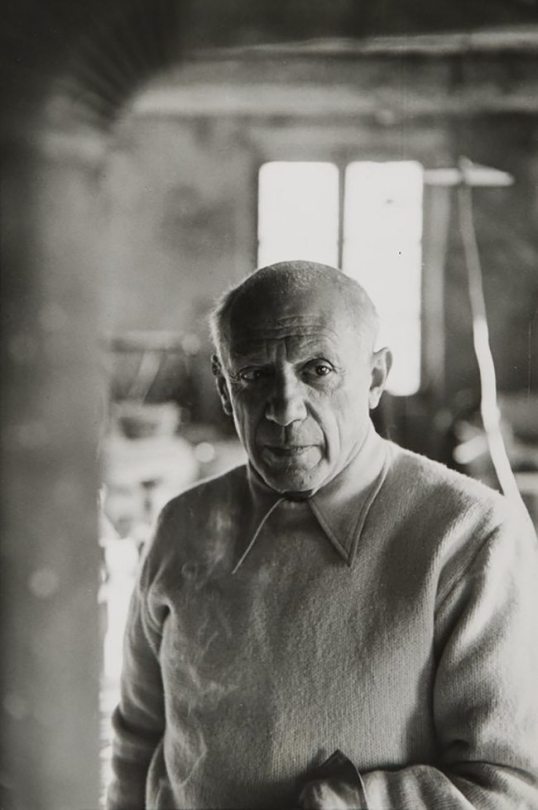
Photograph of Pablo Picasso by Henri Cartier-Bresson. (Ipoxstudios.com, 2019)
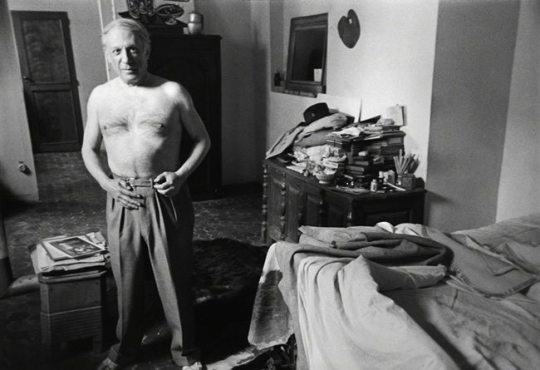
Photograph of Pablo Picasso by Henri Cartier-Bresson (Ipoxstudios.com, 2019)
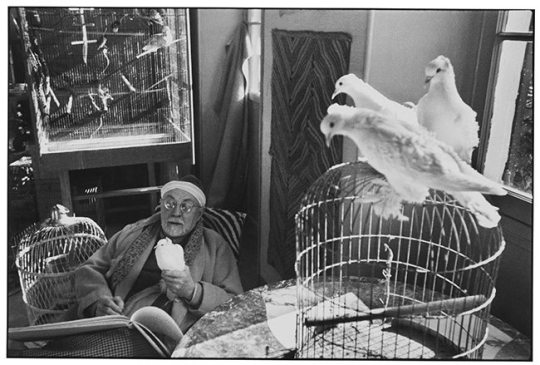
Photograph of Henri Matisse by Henri Cartier-Bresson. (Ipoxstudios.com, 2019)
2. John Loengard -
John Loengard is an American photography born 1934 in New York. Harvard educated, he learned his craft at the International Centre for Photography in New York. His photographic journey began when he was 11 years of age when he began capturing images of his family.
It was in his senior year at Harvard when Loengard was asked by Life magazine to freelance for them by photographing a freighter run aground on Cape Cod in 1956. This began his work with the Magazine.
In 1972 Life magazine suspended its weekly publication and it was then that became the picture editor of Life Special Reports. At the time, he was also the picture editor of People magazine during is formation and for the beginning 3 months of its publication.
Loengard helped in Life magazine’s rebirth and was its picture editor until 1987. While working for Life and other magazines, the photographer authored 10 books and in 2005, He was named “One of the 100 most influential people in Photography” by American Photo. He was inducted into the International Photography Hall of Fame in 2018.
Below is an image of Georgia O'Keeffe sitting on the roof of her home in 1967.

Georgia O'Keeffe photographed on the roof of her Ghost Ranch home in New Mexico, 1967. John Loengard—The LIFE Picture Collection/Getty Images. (Time, 2019)

Image of Richard Avedon by John Loengard, 1994. (Photographers, Books and Hours, 2019)

Annie Leibovitz with her Assistant, Robert Bean on the Chrysler Building by John Loengard. (Johnloengard.com, 2019)
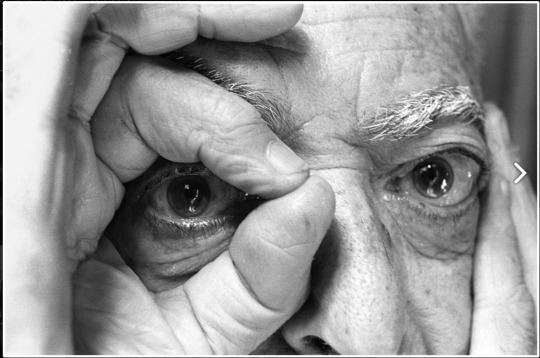
Brassai's Eye by John Loengard. (Johnloengard.com, 2019)
3. Alfred Eisenstaedt -
was a German-born American photographer who was well known for taking black and white shots of celebrities and is famous for using the 1.5 Armature. What is the 1.5 Armature?
“1.5 Armature: There are two ways to break down a 1.5 rectangle. The most basic is the 1.5 Armature. It is created by drawing two diagonals from each corner of a negative. Then draw their reciprocals from opposing corners, which intersect the diagonals at 90°. Through the Eyes of the Diagonal and their reciprocals, draw vertical and horizontal lines through their intersections. The 1.5 Armature was a very popular method used by Cartier Bresson early in his career.” (PetaPixel, 2019)
Below we have Marilyn Monroe in a black and white sweater. Her hair has a soft sheen and is worn natural. The background appears to be a barn structure and give the image a mid-tone grey texture.

Marilyn Monroe (Black Sweater Landscape), 1953
Below is an iconic image seen from around the world. A crowd of happy people gathered on the street in celebration, a man tilts his girl back for a long overdue kiss. I have always loved this image and the start black and white contrast.

Alfred Eisenstaedt, VJ Day in Times Square, August 14-1945, Robert Mann Gallery (PetaPixel, 2019)
What can I say? We all know who this man is in the photo below. Albert Einstein sits writing. Love the rich blacks and the striped batter of the chair against the grey of his sweater and white of his hair.
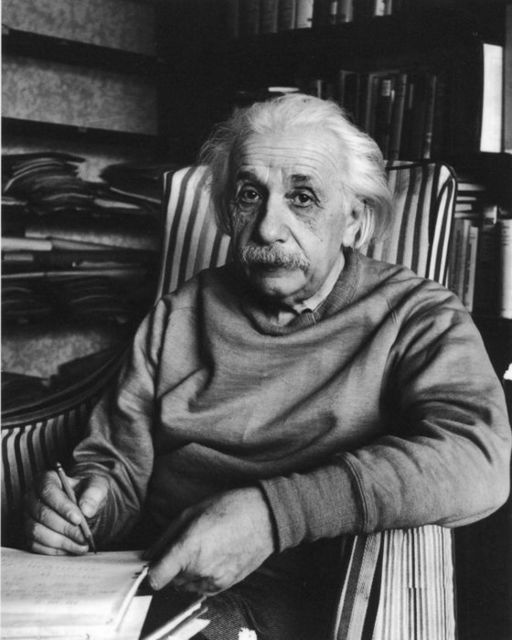
Alfred Eisenstaedt, Albert Einstein, Princeton, New Jersey, 1949, Robert Mann Gallery. (Artsy.net, 2019)
4. Stanislav Puchkovsky (Sean Archer on 500px) is self taught photographer from Yekaterinburg, Russia. He picked up his first camera in 2012 (a Lumix G3) and hasn’t stopped shooting since. And his light source? He uses natural light to capture his classically beautiful images. Amazingly, he shoots all his portraits in his apartment with window light. (Sarkar, Kosa and Sarkar, 2019)(Diamond, 2019)

(Diamond, 2019)

(Sarkar, Kosa and Sarkar, 2019)
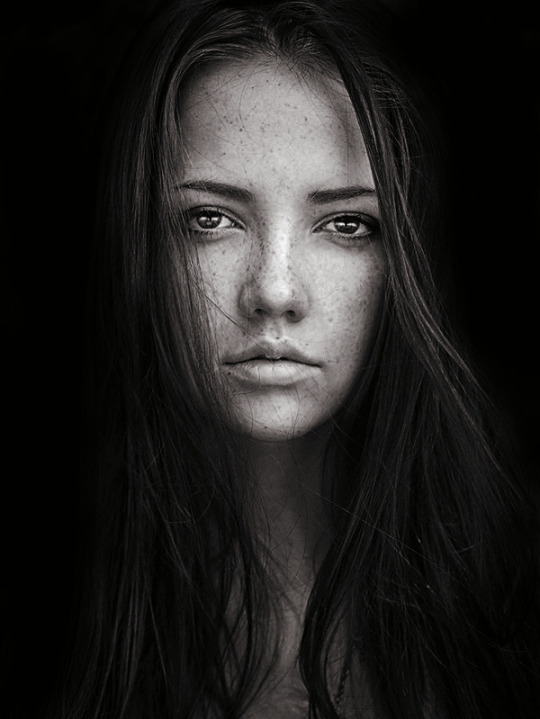
(Archer, 2019)
5. Magdalena Berny
Berny is a self-taught photographer born in 1976 and based in Poland. Her natural light child portraits have been recognised and published in “various press dedicated to photographs such as Digital Camera, Click Magazine, Modern Lens Magazine, Magzter, Great Inspire, just to name few.” (Symposion 2019, 2019)

(Dreams Factory Photography, 2019)

(Instagram.com, 2019)

(Instagram.com, 2019)
Today we went on a walkabout from class in Glasgow to take images of each other (students). The group I was with only chose a silver/white reflector. The diffuser disappeared with the other students.
Here are but a few of the images I captured on the day . . .
Intensely Adam . . .
We used a refector to get light into the ‘cage-like’ structure. I like framing my subjects. I should have had Adam hide his earphones. I can always take them out in Photoshop. Here we are using a silver reflector. I can only assume that the colour cast on Adam’s face is from the rust covered bars surrounding him.
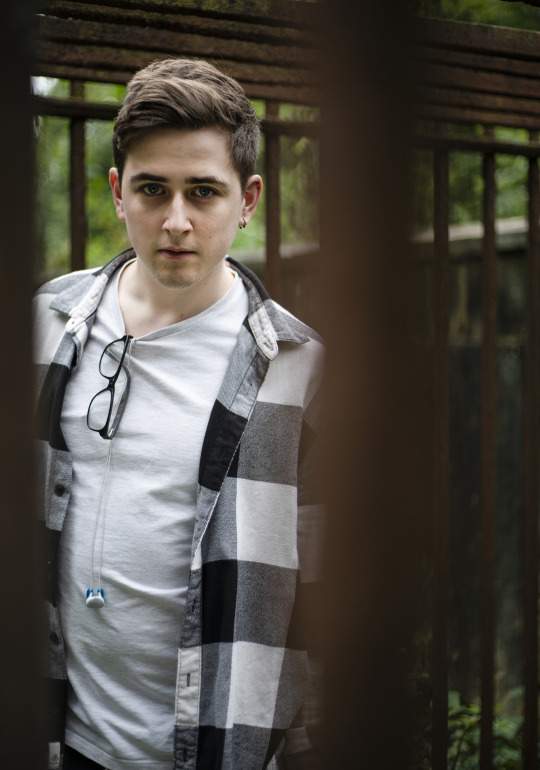
I’m not perfect. It has been a long time, and the excitement of taking images out with the class was the only reason I can fathom why I would make such a rookie mistake as allowing the top of the stone fence behind Adam to run right through his head. No refector.

I like taking images of my subjects that help tell a story about who they are. Adam is extremely talented and has great instincts in photography. Here we are using no reflector.

This is a woman with her dog. She was walking on the pathway where we were practicing and I asked if we could take her portrait. She was reluctant at first, but said yes. I could tell she was all about her dog. This image is a dog portrait with their human. (Again with the wall. It wouldn’t be so bad if it were through her shoulders.)

The lovely woman put down her dog and allowed me to take her photo. She didn’t take off her sunglasses.
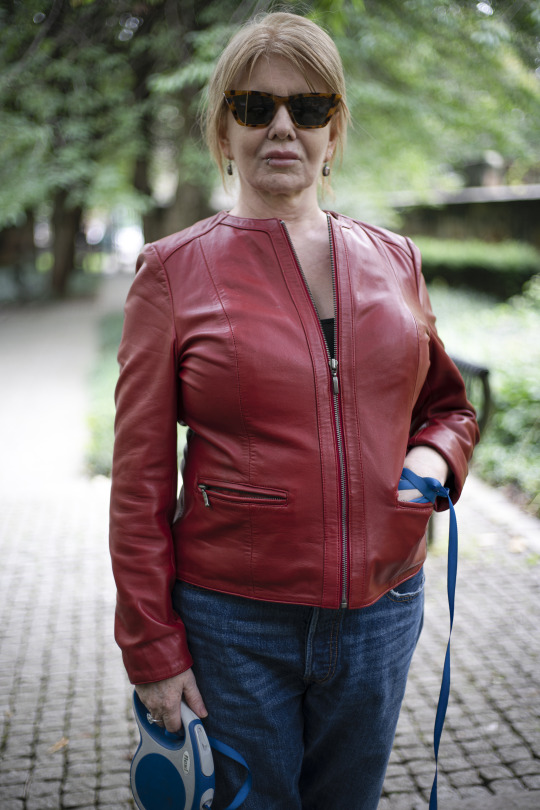

Adam being inquisitive . . .
Adam relaxing on the wall.

Adam rules on the wall . . . a bit over exposed on his face me thinks?

Adam peering into the lens.

My brief, well underway . . .
For my first portrait, I chose my husband. We actually took photos for this portrait the same time and day as I was also working on my #Who project. This worked out well. I love the small Laundry cabin that is situated in the beautiful Finlaystone Country Estate; a large country estate in Renfrewshire near Glasgow, seat of the current Chief of the Clan MacMillan. We have visted here a few times, and I love walking about the trees. The laundry cabin is awesome with its old world objects.



For my second portrait, I chose my friend Andrew. We travelled to Glasgow and visited our favourite place to eat because I knew they had big beautiful windows. The thing about the windows, they are not clean on the outside, so they diffused the light really well. The weather was 13 celsius and it was a cloudy day. Exposure was 1/100 sec at f4.5 using my 50mm lens. I had him sit really close to the window. What I noticed was, there was this white powdery looking dust on the outside of the window and it seemed to make the entire window, even though it was cloudy, glow with light.





For my 3rd portrait, I am going to capture images of strangers, either on Glasgow streets, or perhaps walking in the woods. I have taken my first images of a very talented woman singing on Buchanan Street in Glasgow. I loved her soulful voice. I walked up and stood in front of her until I caught her gaze. I pointed at her, as she was singing, and pointed at my camera then to her. She nodded yes to my silent request. She kept singing while I took a few shots.

I will take further portraits of strangers in the coming week.
For my 4th portrait, I have captured images of my 93-year-old mother-in-law. She is a beautiful woman who lives in Port Glasgow high above the Clyde. There is a gorgeous veiw from her window. I wanted to use that as my backdrop as she has strong ties with her community and has been living in the same house for 65 years. As a matter of fact, my husband was born in the house.
Mum is always talkative, and she never sits still. She is the most inquisitive woman I know to date. Because I knew this setting up for our session, I asked her to stand next to her favourite place, the large picture window in her living room. She continued to ask questions so I took many images in an attempt to get the ones I really wanted.

Mum was getting tired, so I had her sit every once in a while, every second that passed changed the available lighting dramatically.


I decided later to go outside and capture mum in her window, as she can often be seen by the neighbours looking out.


I mixed some more portrait shots of my mum in with the last. OOPS. The last shot was a dramatic silhouette of mum.
Prakel, D. (2007). Lighting. Lausanne, Switzerland: AVA, pp.56-70. (Prakel, 2007)
Lightroom, P. (2019). Choosing the Best Focal Length for Portraits. [online] Pretty Presets for Lightroom. Available at: https://www.lightroompresets.com/blogs/pretty-presets-blog/best-focal-length-portraits [Accessed 4 Oct. 2019]. (Lightroom, 2019)
Mansurov, N. (2019). What is Lens Distortion?. [online] Photographylife.com. Available at: https://photographylife.com/what-is-distortion [Accessed 4 Oct. 2019]. (Mansurov, 2019)
Hull, C. and >, M. (2019). What Is the Best Lens for Portraits? | Photography Equipment. [online] ExpertPhotography. Available at: https://expertphotography.com/best-lens-for-portraits/ [Accessed 30 Sep. 2019]. (Hull and >, 2019)
Abbott, J. (2019). Three prime lenses every portrait photographer needs to consider. [online] digitalcameraworld. Available at: https://www.digitalcameraworld.com/tutorials/the-best-portrait-lens-three-lenses-every-portrait-photographer-needs-to-consider [Accessed 30 Sep. 2019]. (Abbott, 2019)
Cambridgeincolour.com. (2019). Making the Most of Natural Light in Photography. [online] Available at: https://www.cambridgeincolour.com/tutorials/natural-light-photography.htm [Accessed 15 Sep. 2019]. (Cambridgeincolour.com, 2019)
Neirynck, F. (2019). Henri Cartier-Bresson (1908 – 2004) | Le Couperet. [online] Lecouperet.net. Available at: http://www.lecouperet.net/hcb/en/portraits-by-hcb [Accessed 15 Sep. 2019]. (Neirynck, 2019)
Ipoxstudios.com. (2019). You are being redirected.... [online] Available at: https://ipoxstudios.com/proof-that-henri-cartier-bresson-used-dynamic-symmetry-in-photography-4k-video/ [Accessed 15 Sep. 2019].
Photographers, A., Books, p. and Hours, O. (2019). Age of Silver: Encounters with Great Photographers | powerHouse Books. [online] Powerhousebooks.com. Available at: http://www.powerhousebooks.com/books/age-of-silver-encounters-with-great-photographers/ [Accessed 5 Oct. 2019]. (Photographers, Books and Hours, 2019)
Huxley-Parlour Gallery. (2019). Henri Cartier-Bresson | Photographer's Biography & Art Works | Huxley-Parlour Gallery. [online] Available at: https://huxleyparlour.com/artists/henri-cartier-bresson/ [Accessed 5 Oct. 2019]. (Huxley-Parlour Gallery, 2019)
Johnloengard.com. (2019). John Loengard – Photographs. [online] Available at: https://johnloengard.com/ [Accessed 5 Oct. 2019]. (Johnloengard.com, 2019)
Time. (2019). https://time.com. [online] Available at: https://time.com/3491091/georgia-okeeffe-invincible/ [Accessed 15 Sep. 2019].
Sarkar, G., Kosa, M. and Sarkar, S. (2019). Stanislav Puchkovsky (Sean Archer) - Incredible Portrait Photographer from Russia - 121Clicks.com. [online] 121clicks.com. Available at: https://121clicks.com/showcases/stanislav-puchkovsky-sean-archer-incredible-portrait-photographer-from-russia [Accessed 13 Sep. 2019].
Archer, S. (2019). Sean Archer on Fstoppers. [online] Fstoppers. Available at: https://fstoppers.com/profile/37142 [Accessed 15 Sep. 2019].
Diamond, D. (2019). Stanislav Puchkovsky (aka Sean Archer) is a Master of Natural Light Portraits. [online] Fstoppers. Available at: https://fstoppers.com/bts/stanislav-puchkovsky-aka-sean-archer-master-natural-light-portraits-9584 [Accessed 13 Sep. 2019].
PetaPixel. (2019). The Great Compositions of Photographer Alfred Eisenstaedt. [online] Available at: https://petapixel.com/2013/04/15/the-great-compositions-of-photographer-alfred-eisenstaedt/ [Accessed 30 Sep. 2019]. (PetaPixel, 2019)
Artsy.net. (2019). Alfred Eisenstaedt: Portraits of the Past | Robert Mann Gallery | Artsy. [online] Available at: https://www.artsy.net/show/robert-mann-gallery-alfred-eisenstaedt-portraits-of-the-past [Accessed 30 Sep. 2019]. (Artsy.net, 2019)
SLR Lounge. (2019). The Flash Modifier You Already Own - SLR Lounge. [online] Available at: https://www.slrlounge.com/workshop/the-flash-modifier-you-already-own/ [Accessed 15 Sep. 2019].
Sekonic.com. (2019). Working with the Sun | Photography How To Articles – What's Your Specialty? Photographer. [online] Available at: https://www.sekonic.com/united-kingdom/whatisyourspecialty/photographer/articles/working-with-the-sun.aspx [Accessed 15 Sep. 2019].
Digital-photo-secrets.com. (2019). What in the heck is that thing for? A photographer's guide to using the black flag :: Digital Photo Secrets. [online] Available at: https://www.digital-photo-secrets.com/tip/6721/guide-using-black-flag/ [Accessed 15 Sep. 2019].
Anon, (2019). [online] Available at: https://www.adorama.com/dodsck.html [Accessed 15 Sep. 2019].
Ghionis, J. (2019). How to Perfect Natural Light with a Collapsible Diffuser feat. Jerry Ghionis. [online] Westcott University. Available at: https://westcottu.com/using-the-omega-reflector-as-a-diffuser [Accessed 15 Sep. 2019].
Instagram.com. (2019). #magdalenabernyphotography hashtag on Instagram • Photos and Videos. [online] Available at: https://www.instagram.com/explore/tags/magdalenabernyphotography/?max_id=1254958811895111547 [Accessed 15 Sep. 2019].
Dreams Factory Photography. (2019). MAGDALENA BERNY - STUDIO PORTRAIT. [online] Available at: https://www.dreamsfactory.co.uk/event/magdalena-berny-studio-portrait [Accessed 15 Sep. 2019].
Instagram.com. (2019). PAGE1 (@page1mag) • Instagram photos and videos. [online] Available at: https://www.instagram.com/page1mag/ [Accessed 15 Sep. 2019].
Symposion 2019. (2019). Magdalena Berny | Children Portraits. [online] Available at: https://www.symposion.photo/en/magdalena-berny-en/ [Accessed 15 Sep. 2019].
1 note
·
View note
Text
This slideshow requires JavaScript.
1. A home frozen in time An enchanting time capsule, the Marion Carll Farmhouse on Long Island has lain empty for years due to a lack of funding and a legal battle over ownership rights that has only just been resolved. Photographer Bryan Sansivero was granted exclusive access by the local school board and district to capture the beguiling Victorian property before its many antiques and curios were removed. Take a peek around the house that time forgot and transport yourself to a bygone era.
2. A faded beauty Located in the hamlet of Commack in Suffolk County, New York, the nine-acre farmstead dates way back to 1701, while the clapboard farmhouse was built on the eve of the Civil War in 1860. The property takes its name from long-time resident Marion Carll, who was born in 1885.
3. A pillar of the community Marion Carll was a renowned teacher who taught in the local district and went on to found the area’s first PTA and had a grammar school named after her in 1957. When she died in 1968, she bequeathed the house to the Commack School Board and District with the proviso that it should only be used for educational and historical purposes.
4. A fight for ownership Occasional classes were offered by the Boards of Cooperative Educational Services (BOCES) but abandoned in the 1990s due to a lack of funding. Since then, the house and surrounding farm have been left vacant. In 2012, Ms Carll’s descendants launched a legal battle with the school board and district which they accused of failing to adhere to the conditions set out in their ancestor’s last will and testament.
5. Period details A New York State Supreme Court judge recently ruled that the school board and district has a right to retain ownership of the property, ending the protracted legal battle. You can see why they fought over this house. Though crumbling, it still boasts oodles of period charm. Ms Carll was clearly keen to preserve its 19th-century allure and did little if nothing during her lifetime to modernize the farmhouse, which is resplendent with fine antiques and interesting curios.
6. The parlor Talk about a time warp home! The parlor contains some wonderfully evocative pieces including this ornate piano by New York City company Calenberg & Vaupel. The firm first started making musical instruments in 1864, four years after the farmhouse was constructed
7. Antique medicines Empty bottles that once contained all sorts of curious concoctions abound in the farmhouse. Note the bottle of paint-stripping potion Pyranzine and the container labeled ‘Laudanum’, a super-potent and extremely addictive tincture of opium that was used to treat pain.
8. Untouched rooms Although covered in thick dust, the house looks as if she has just left the room. Here, her old sewing machine sits ready for use in what would be a bright spot by the window, if the blinds were open.
9. Locked-up riches Ms Carll secured her valuables in a safe manufactured by the famous Hall’s Safe Company. The firm, which was established during the mid 19th century in Cincinnati, makes some of the finest safes and locks in the world and is still going strong today.
10. Original features Beautiful marble fireplaces adorn the rooms in the farmhouse, and though the wallpaper is peeling off, the property’s original features, including the door frames and skirting boards, are in remarkably good condition.
11. Decorative flourishes Charming touches pervade the property. They range from delicately embroidered cushions and blankets to exquisite china pieces and this enamel chamber pot filled with fabric flowers.
12. A family home Photographs of the Carll family are captured here scattered on a table in the farmhouse. As you can see from the classy clothing they are sporting, the family members appear to be comfortably well-off and exceedingly genteel.
13. The ravages of time While some areas of the house look to be in a reasonable state, others are obviously dilapidated and in dire need of restoration work.
14. A snapshot of the past Education was Marion Carll’s vocation and passion, so it comes as no surprise that the much-loved teacher owned a writing bureau, in front of which she no doubt sat for hours composing letter after letter and marking her students’ work.
15. The dining room The dining room is just as well-appointed and elegant as the other rooms in the farmhouse. A solid wooden table takes pride of place in the center, while an imposing cabinet off to the side showcases the family’s fancy china and glassware.
16. Some mod cons The odd relatively modern touch can be found in the house including this attractive Art Deco fan, which contrasts with the Victorian and early 20th-century objects that are dotted around the property.
17. Retro remedies Another curious bottle in this shot: Humphrey’s “30”, a homeopathic remedy to help prevent incontinence and bed-wetting. Intriguingly, the classic concoction is still available these days and can even be snapped up from Amazon.
18. The farmhouse dresser This dresser in what appears to be the farmhouse kitchen contains the family’s day-to-day crockery. The chinoiserie Blue Willow pattern was hugely popular in America during the late 19th century and throughout much of the 20th century.
19. Prints from the past The walls of this room are decorated with several historical prints including a copy of John Trumbull’s iconic Declaration of Independence, which was painted in 1818 and features on the two-dollar bill.
20. Antique furnishings This photo shows what looks like the bathroom or washroom of the farmhouse. Note the white clapboard walls so typical of nearby New England, as well as the fancy gilded mirror and old-style water pump.
21. Old lace The master bedroom contains a box of sewing threads and a dressmaking dummy covered with an exquisite lace piece that was presumably hand-tailored by Ms Carll herself.
22. A picture of neglect This wider shot of the master bedroom shows exactly what years of vacancy and neglect can do to a property that was once meticulously maintained. Paint is peeling off the walls, while the floor and furniture are littered with debris.
23. A 1930s timepiece Another Art Deco piece, this wind-up Ingraham Meteor alarm clock was manufactured in 1936. It sits next to a dusty empty bottle of C. C. Parsons’ Household Ammonia, an essential cleaning product from way back when.
24. Faded fashions More dressmaking paraphernalia in this room. Against those starkly cracked walls, this space has a rather dramatic and eerie feel. The dummy is dressed in a corseted bodice and cage crinoline which was used to support the elaborate skirts and bustles of 19th-century dresses.
25. A simpler way of life This evocative shot shows a chest of drawers that was used as a wash table. Age-old toiletry products feature on the tabletop alongside a jug, bowl and antique towels for daily ablutions.
26. Dancing days gone by A pair of black ballet-style shoes, which may have been hand-embroidered by Marion Carll or another member of the family, lie on one of the linen-covered beds in the property, placed next to two fabric roses.
27. A glimpse into history Peering into the long hallway on the upper floor of the farmhouse, you can’t help but notice how rundown parts of the property have become. This wing of the house was used to accommodate slaves before the abolition of slavery in 1865, thereafter it served as the servants’ quarters.
28. A vintage tableau In contrast to the long hallway, this bedroom is in fairly good shape and doesn’t look like it would need much more than repapering to restore it to its former glory. Silk dresses, straw hats and ballet shoes pack the closet, along with a pretty parasol.
29. The attic The attic room looks like it was once used for storage or perhaps sleeping quarters for domestic staff. Damp stains the ceiling and a number of rusty old cage crinolines hang from wooden hooks on the wall.
30. A grand inheritance The beauty of this time capsule home, but for now at least the gates remain closed on the property while the Commack School Board consult the community on its fate. Options include turning it into a public park, a working organic farm and creating an education center, all in the spirit of Marion Carll’s wishes.
Originally Posted on: https://gayle61.blog/2019/04/27/step-inside-this-abandoned-old-house-untouched-for-40-years/
A step inside the Marion Carll Farmhouse 1. A home frozen in time An enchanting time capsule, the Marion Carll Farmhouse on Long Island has lain empty for years due to a lack of funding and a legal battle over ownership rights that has only just been resolved.
3 notes
·
View notes
Text
Louis Vuitton Sues Two Chinese Shoe Companies For Copyright Infringement

French fashion house and luxury retail company, Louis Vuitton is suing two subsidiaries of China’s footwear giant, Belle International for allegedly copying the design of a pair of HK$8,950, famous Archlight sneakers.
As per the intellectual property high court of Hong Kong, the fashion brand Louis Vuitton has accused Belle International (China) and Best Able Footwear – both subsidiaries of Chinese shoe giant Belle International of manufacturing and selling a product that looks substantially similar to a product from its spring and summer, 2018 – the LV Archlight trainers. As a result of copying and selling these products, the two Hong Kong registered companies have damaged LV’s brand name and business reputation.
Undoubtedly, LV has acquired a distinctive reputation and goodwill for their trainers not only in Hong Kong, but across the globe as well; therefore the customers would always associate the product purely with the French brand.
According to the documents, the defendants first began selling its alleged replica in July last year. Belle International runs an array of retail chains in Macau, Hong Kong, and mainland China, including Jipi Japa, Staccato, Joyce & Peace to name a few, mainly focusing on women’s collection.
The fashion label Louis Vuitton has now asked the court to make sure that all the similar products are removed from the markets and the companies’ platforms. It has demanded the firms to cease all copyright infringements, and hand over or destroy the existing alleged copies. LV is also seeking for monetary damages of a sum to be determined at trial.
The officials have stated that the copyright law of Hong Kong will respect the freedom of expression and take a decision accordingly. The trial date has yet to be scheduled. More Visit: http://trademarkmaldives.com/ View Source: http://www.trademarkmaldives.com/blog/louis-vuitton-sues-two-chinese-shoe-companies-for-copyright-infringement/
#Intellectual Property Rights#Powerof Attorney#power of attorney#Trademark Registration Online#Attorney form#Register a Trademark#Patent Application#Trademark Application#Law Firm in Maldives#Patent Submission
1 note
·
View note
Photo

ISLANDS OF AGRICULTURAL INNOVATION: INDOOR FARMING IN ASIA
What’s the real state of the indoor farming industry, beyond all the marketing and hype? How are food systems and societies actually adapting to these new forms of production and distribution? These were a couple of the large questions on Jacob Eisenberg’s mind when he decided to leave his job and travel to Japan, Singapore, and Taiwan last fall to seek the answers for himself.
Since that point of inception until his return flight home, Jacob journeyed through the three island nations visiting urban farms, meeting with farm operators and association representatives, and observing the failures and successes that define indoor farming at this present moment.
To share his findings with the world, Jacob created Agri-Future as a space to post firsthand accounts of his adventures within the intersection of food, technology and sustainability. This article is the first part to an Islands of Agricultural Innovation series that will share Jacob’s trip and bring his detailed accounts of Asia’s indoor farming landscape to Agritecture readers far and wide.

Jacob Eisenberg visiting the Veggie Life Plant Factory headquarters in Singapore during his journey throughout Asia. This article is Part 1 of a series that will bring Jacob's adventures to Agritecture readers across the globe. (Credit: Jacob Eisenberg)
“My curiosity first began looking at urban environments,” Jacob explained, adding that he has for many years had “a fascination with the development of cities, particularly of ancient cities and their relation to the natural environment.” For a while, he wanted to become an archeologist or anthropologist.
Similar to countless others, Jacob’s particular interest in urban farming took root while reading The Vertical Farm by Columbia professor Dickson Despommier, in 2011. “Something just clicked with that book,” Jacob reflected. “Even though it was such a novel idea at the time, it helped to address in my mind so many issues that I was trying to grapple with: sustainability, overpopulation, climate change, pollution.”
“There's so much optimism in that book,” Jacob added, “and being able to suspend reality and just imagine future possibilities made me very passionate and excited.”
This experience reading The Vertical Farm happened to coincide with the start of the Arab Spring, when food prices were having enormous geopolitical implications. Jacob was actually in high-school and studying abroad in China at the time, where he says the situation became particularly tense. “The whole experience really solidified my fascination with food’s relationship to the urban environment and to societal challenges and opportunities,” said Jacob.
During college, Jacob was able to pursue his new passion further with a study-abroad program that took him to São Paulo, Cape Town, and Hanoi. “We wanted to see what the state of urban agriculture was in these rapidly developing cities,” Jacob said. While traveling, he interviewed over 60 small-scale urban farmers, each grappling with different challenges and opportunities around growing food in some of the world’s fastest growing cities.
This experience clearly stuck with Jacob, because it wasn’t long after college that he decided to leave his job and go off on a similar adventure of his own. Jacob knew by now that he wanted to be somewhere within the ag-tech space, he didn’t know exactly where, but he was irreversibly attracted to the opportunities.
“Indoor agriculture is by no means the silver bullet,” Jacob writes on his site, “but it does offer a revolutionary opportunity to re-envision our food system — combining six thousand years of agricultural knowledge with precision technologies and food sourcing strategies of today and tomorrow.”

Mahoroba Suikoen Plant Factory in Nara, Japan. In Vertical Farms, or Plant Factories as they're known in Japan, plants are grown hydroponically in stacked layers. Different color LED lights are used to emphasize different attributes during plant growth. (Credit: Jacob Eisenberg)
For some, the prospect of leaving one’s job and venturing off to see the world would have been too daunting of a thought to ever actually pursue. But for Jacob, it was merely practical.
“My thought process at the time was: If I'm really passionate about learning more about this industry, then how can I see the actual state of indoor agriculture?” he said. “I saw this as such a tremendous and unique educational opportunity—well worth the time and preparation to use my savings from my job. I think that the best learning happens on the ground with the people actually doing the work. For me it was my jump into the world of indoor agriculture, instead of working my way up through a technical or business program.”
For this new journey into the world of ag-tech, Jacob selected three countries where he would explore the indoor agriculture industry and visit with farmers and technology providers: Japan, Singapore, and Taiwan.
You may notice some immediate similarities between these places, and for Jacob at least two of them were intentional.
This first obvious similarity is that each country is in Asia, but this wasn’t done simply to make the travel logistics easier. “I always had my eye on what was going on in Asia,” Jacob explains, “and I do speak Mandarin.” He’d also been paying close attention to the local food blogs in Asia and noticed that there's a strong focus on food quality and safety at this moment, leading entrepreneurs more and more into the realm of controlled environment agriculture as a way to recapture consumer trust.
All three countries were also selected because they are islands that are heavily dependent on food imports, which renders them extremely vulnerable to climate or geopolitical events and market fluctuations that are entirely outside their control. Singapore, for example, currently imports over 90% of the food consumed in-country. “They're the most predisposed locations to be food insecure in the near future,” Jacob explains, which has also made them some of the most innovative and important places when it comes to urban farming.
“These countries also have very limited farming land given the size of their populations,” he adds, “plus they each have fairly high levels of recent economic development and similar consumer classes that have diets high in plant based foods.”

Strawberries growing hydroponically at a cultivation test facility outside of Taipei, Taiwan. (Credit: Jacob Eisenberg)
However, as Jacob discovered, not everything in the three island nations is similar. Despite their shared need to become more self-reliant in terms of food production, Jacob also discovered throughout his journey that each country’s indoor agriculture industry has many unique factors surrounding it.
“Taiwanese exploration into this space is often overshadowed by mainland China,” Jacob explained, “which is really unfortunate because there is so much going on in Taiwan with technology around indoor farming, such as horticultural lighting and automated systems.”
He also observed that Taiwanese entrepreneurs “are doing an incredible job of developing different business models for their farms, which are usually on a smaller scale and more diverse in nature than what you find in Japan.” Japan and Taiwan are similar, however, in that each country has a lot of industry associations, such as the more famous Japan Plant Factory Association, whereas these are not as commonplace in Singapore.
In Singapore, however, indoor agriculture currently enjoys an unparalleled amount of government support. The Singapore government has gotten behind urban agriculture in a number of ways, including recently instituted incentives for developers to integrate urban agriculture into new construction. However, “navigating the certifications for food safety and quality is still challenging for starting operations, even with all the government support,” Jacob noted. “I think this highlights the difficult regulatory environment that exists everywhere around urban farms, due to their very nature of being all at once a food business, manufacturer and office space— municipal regulators just don’t know how to deal with these sorts of unprecedented businesses.”

Lettuce growing in a vertically stacked hydroponic system under LED lights at National Taiwan University. (Credit: Jacob Eisenberg)
Without a doubt, Jacob’s journey confirmed a suspicion that he already had: Japan, Singapore and Taiwan are right up there with the global leaders in indoor agriculture. But when pressed to say which nation is currently leading the world, Jacob was reluctant to point towards any single country.
“There's no real leadership in indoor agriculture yet from any one country, in my experience,” Jacob said. And his reason for this is simple: no one model can be exported everywhere, at least not yet. “I think that the Netherlands are incredible with what they've done in terms of glass greenhouses, for example, but their greenhouses can't be used in Taiwan with their monsoon rainstorms,” he explained.
Excluding greenhouses and speaking strictly about vertical farms, “Japan has had a decent start ahead of the competition with their Plant Factories,” Jacob adds, “but they still have their fair share of challenges too before they can be easily dubbed the leader.”
Be sure to stay tuned in coming weeks as we continue this Islands of Agricultural Innovation series and share Jacob’s detailed accounts of the indoor farming world in Asia.
#urban agriculture#vertical farming#plant factory#hydroponics#asia#sustainability#plants#urban farming#islands#double-size
57 notes
·
View notes